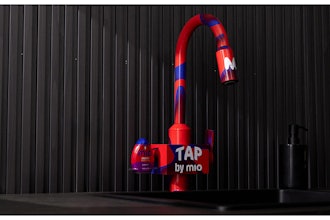
 Sean Riley
Sean RileyThe Industrial Internet of Things (IIoT) has almost infinite potential but potential is always grounded by a tangible ROI. In addition to the obvious cost savings and productivity gains, IIoT can be leveraged for developing more innovative products and services more efficiently. For instance, with IIoT, a manufacturing organization can optimize machine reliability and production, improve product quality, reduce wait times for quality checks, launch connected products and drive usage-based business models. More and more organizations are catching on to these demonstrable benefits, with Vanson Bourne research indicating the average manufacturer already houses 749 connected devices and that 90 percent of organizations believe the IIoT serves as a crucial competitive differentiator.
Common IIoT Project Complications
Still, IIoT implementations can prove challenging. Determining a clear starting point and ensuring value is delivered quickly are two incredibly common hurdles. Another common scenario that can lead to dire consequences is conducting IIoT in a vacuum. For example, if a manufacturer selects an IIoT software platform for a particular need or use case but neglects to consider any other needs the IIoT platform could fulfill, expanding that IIoT implementation will prove exceptionally difficult. The truth is, successfully scaling any IIoT project requires continually expanding to incorporate other use cases and/or expanding single use cases horizontally across the entire organization.
Understandably, organizations often start with cloud-based IIoT software trials that promise quick delivery and easy implementations. However such an approach only deepens the IIoT vacuum problem, as it removes the critical step of thinking holistically and taking the time to carefully evaluate how the software will meet a range of criteria and long-term operational goals. That said, taking months or even years to engage in a more traditional software evaluation process and request for proposal is no longer realistic from a competitive standpoint, even if this approach does tend to encourage more holistic IIoT thinking.
Best Practices for Escaping the Vacuum
To escape the IIoT vacuum scenario and implement software that supports both current operational needs and long-term business goals, organizations should adhere to the following three best practices:
- Evaluate all use cases. For any IIoT project to be successful, organizations must first determine their current and potential use cases, as well as carefully consider their current IIoT platform capabilities. Even if future use cases aren’t obvious yet, there’s enough information out there that can help organizations understand what they should be working towards. For instance, perhaps designing a predictive maintenance program could serve as a future use case, or maybe realizing condition-based quality maintenance should be the goal.
- Determine supporting capabilities. After evaluating both current and potential IIoT use cases, organizations need to determine what specific capabilities are required in order to deliver those use cases. This could include capabilities such as device connectivity, analytics, application connectivity and/or partner connectivity requirements. To ensure all capabilities are accounted for, it’s important to also take into consideration any previously pursued IIoT projects (whether they were successful or not).
- Confirm what’s real. Once all use cases have been evaluated and relevant supporting capabilities have been determined, it’s time to confirm the capabilities of whatever IIoT platform is currently in place. This is a difficult yet critical step that must be completed objectively, as often many software capabilities have been promised but they’re not real. Furthermore, if a significant amount of time and work has already been devoted to an IIoT platform, some project stakeholders may be reticent to admit to any shortcomings and inflate the actual capabilities of the platform.
A Holistic Approach Leads to Greater Value
Organizations that are able to avoid the perennial IIoT vacuum stand to gain far more value from their implementations. Thinking more comprehensively allows them to scale their IIoT projects vertically and horizontally, which can increase existing investment returns and create additional returns as new projects are completed. Escaping the IIoT vacuum also allows organizations to devise stronger strategies around emerging IIoT capabilities and accurately forecast the real-world impact of their IIoT project on critical business processes.
Too many IIoT initiatives promise lofty strategic differentiation, impressive increased revenue figures and enticingly low operational costs, when in reality most result in comparatively smaller gains due to the structure or current capabilities of the organization in question. Avoid falling victim to this widespread phenomenon by putting ample thought into the specific use cases, necessary capabilities and objective truths of your IIoT project before implementing a myriad of potentially conflicting solutions. In doing so, organizations can realize the full benefits of IIoT, while also gaining the ability to scale (up and/or out) their use of IIoT in iterations and reduce any potential implementation risks.
Sean Riley is Director of the Manufacturing Practice at Software AG.























